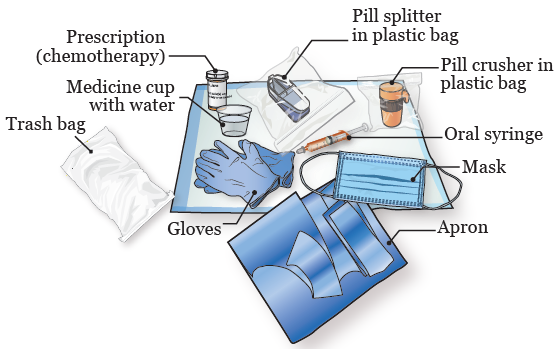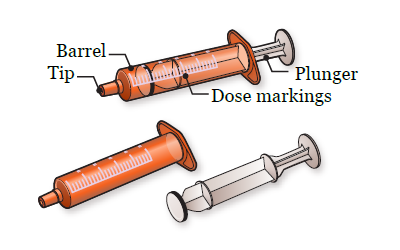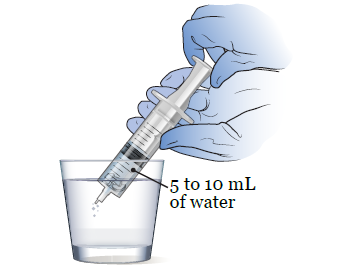This information will help you or your caregiver safely handle oral chemotherapy (chemotherapy you take by mouth) at home.
About chemotherapy
What is chemotherapy?
Chemotherapy is medicine that your healthcare provider may prescribe you to help treat your cancer. You can take this medicine at home. They come in different forms, such as pills (tablets and capsules) and liquids.
Why is it important to understand how to handle this medicine?
Chemotherapy attacks cancer cells in your body. It also can harm normal healthy cells. The risk of having side effects from handling this medicine is low. But it’s important to be safe and careful when you handle the medicine.
What is the best way to store oral chemotherapy medicine?
- Keep all chemotherapy medicine in a sealed container away from children and pets.
- Store your medicine in a cool, dry place, away from heat, sunlight, and moisture.
-
Do not store your medicine in the bathroom or in a cabinet over your kitchen stove. It may get warm and humid in these areas.
- You may need to store certain medicine in the refrigerator. Read the label on your medicine to learn how to store it.
- After taking your medicine, make sure to put them away.
- Keep this medicine in their original pill bottle. Do not put them in a pill box unless a member of your care team tells you to.
How to handle chemotherapy safely
This section includes general information about oral chemotherapy medicine. For information about preparing and taking your medicine, refer to your medicine list or ask your healthcare provider.
How do I safely handle oral chemotherapy medicine?
-
Do not crush, break, or open any pills unless your healthcare provider tells you to.
- If you need to split or open pills, wear a facemask that covers your nose and mouth.
- Do not touch chemotherapy medicine if you’re pregnant, could become pregnant, or are breastfeeding.
- Wash your hands for at least 20 seconds before and after touching your medicine.
-
Wear disposable gloves (gloves that you throw away) when handling chemotherapy. Wear gloves while you’re handling any kind of chemotherapy.
- If your caregiver is helping you, they will need to wear disposable gloves too. They should throw the gloves away after using them and wash their hands.
- You may want to wear an apron when preparing and taking liquid chemotherapy. This is very true if you need to crush or dissolve pills. This will keep you from getting medicine on your clothing. If you get medicine on your apron, wash it separately from other clothing. Use hot water.
How do I prepare a dose of oral chemotherapy?
You may not be able to swallow your medicine whole. If so, your healthcare provider may instruct you to prepare your dose of chemotherapy at home before taking it. Follow your healthcare provider’s instructions on how to prepare your medicine.
Here are some general guidelines on how to dissolve oral chemotherapy if your healthcare provider tells you to:
-
Gather your medicine and supplies on an uncluttered counter or table. Make sure it’s away from windows, fans, heating ducts, and where you prepare food. You’ll need (see Figure 1):
- Your medicine
- An oral syringe and syringe cap
- An apron
- A facemask
- Disposable gloves
- A disposable pad or aluminum foil
- A cup of tap water. Make sure the water is not hot.
- A plastic bag you can tightly close
-
A pill crusher or splitter, if needed

Figure 1. Gather your supplies
- Wash your hands with soap and water for at least 20 seconds or use an alcohol-based hand sanitizer.
- Put on your disposable gloves. Also put on your mask and apron if you’re mixing or crushing pills, giving medicine to a child, or giving medicine in a NG or G-tube.
- Clean the area and cover the counter with a disposable pad or aluminum foil.
-
Remove the plunger from the syringe (see Figure 2).

Figure 2. Parts of the syringe -
Place the amount of pills you need for your dose into the barrel of the syringe.
-
If your healthcare provider told you to crush or cut your medicine, do this before placing it into the barrel of the syringe. Make sure to do this with a pill crusher or splitter (see Figure 3). Do not use a knife. If you have questions about crushing or cutting your medicine, talk with your healthcare provider.

Figure 3. Pill crusher (left) and pill splitter (right)
-
If your healthcare provider told you to crush or cut your medicine, do this before placing it into the barrel of the syringe. Make sure to do this with a pill crusher or splitter (see Figure 3). Do not use a knife. If you have questions about crushing or cutting your medicine, talk with your healthcare provider.
-
Place the plunger back into the barrel of the syringe (see Figure 4).

Figure 4. Syringe with pills inside -
Pull up 5 to 10 milliliters (mL) of tap water into syringe (see Figure 5). Only mix your dose with water. Do not use other liquids unless your healthcare provider tells you to.

Figure 5. Pull up 5 to 10 mL of water - Put the cap on the syringe.
-
Gently rock or swirl the syringe back and forth to help your medicine dissolve in the water.
- The pill may not dissolve completely. You may see small white particles floating in the water. You can take the medicine like this.
- If you take your medicine through an NG or G-tube, make sure it is completely dissolved before taking it.
- Take the dose as soon as the pill breaks apart. This often happens within 2 to 5 minutes, depending on the medicine.
-
After taking your medicine, pull up another 5 mL of tap water into the same syringe. Drink it or put it into the NG or G-tube. This will help you get all the medicine left in the syringe.
- If you’re using a NG or G-tube, you must flush the tube with 10 to 20 mL of water. Follow your healthcare provider’s instructions.
- Place the disposable bed pad or aluminum foil and gloves in a plastic bag. Close it tightly and throw the bag away in your trash.
- Clean the counter or table surface with soap and warm water.
- Wash your hands with soap and water for at least 20 seconds, even if your skin did not touch your medicine.
- Remove your apron. If you got medicine on it, wash it with hot water. Do not wash it with other clothing.
How should I handle my body fluids if I am taking chemotherapy?
During and after your therapy, some of your medicine may be in your body fluids. This includes your urine, bowel movements, vomit, saliva, vaginal fluid, or semen. To learn more about handling body fluids while you’re taking chemotherapy, read How to Safely Handle Chemotherapy and Biotherapy at Home.
What should I do if I spill or splash my medicine or body waste by accident?
If your medicine or bodily fluid spill or splashes, follow the guidelines in this section. For a quick reference, read the resource Follow the 4 Cs if Your Chemo Leaks or Spills.
Make a spill kit
You should be ready to clean up medicine spills while you’re taking or giving chemotherapy at home. Make a spill kit that has the supplies below. Keep the kit where you can easily reach it.
You’ll need:
- 2 pairs of disposable gloves
- Paper towels or an absorbent towel that can be thrown away
- Dish soap or laundry detergent
- 2 plastic bags that seal (1-gallon size or larger)
What to do if your medicine spills or splashes
- Before cleaning the spill, make sure all children and pets are away from the area.
- Put on 2 pairs of disposable gloves.
- Soak up the spill with paper towels.
- Wash the area with dish soap or laundry detergent and water.
- Put dirty paper towels and cleaning supplies in a plastic bag.
- Take off your gloves. Put them in the bag with the dirty paper towels. Seal the bag tightly.
- Place the sealed bag in another bag that seals tightly.
- Wash your hands with soap and water for at least 20 seconds.
What to do if your medicine gets in your eyes or on your skin
If your medicine gets on your skin, wash the area with soap and water. Call your healthcare provider if you have any redness, pain, or burning on your skin.
If your medicine splashes in your eyes, rinse them with running water right away. Keep the water flowing over your open eyes for 10 to 15 minutes. Call your healthcare provider to ask for more instructions.
What to do if your medicine gets on your clothing or linens
- Put on a pair of disposable gloves.
- Make sure that the items with medicine on them do not touch any part of your body.
- Wash the clothing and linens in hot water. Do not wash them with any other items.
If possible, wash the dirty clothes and linens right away. If you cannot wash them right away, put them in a plastic bag that seals until you can wash them.
How do I get rid of unused oral medicine I am no longer taking?
If you have any leftover or expired medicines, you can bring them to MSK pharmacy’s medicine drop box to dispose of them. You can find the drop box at the 425 East 67th Street entrance of the Haupt building. There may be other drop boxes in your community. To learn more, read How to Get Rid of Unused Medicine.
Your healthcare provider cannot get rid of your medicine for you. Do not bring them to your visit.
